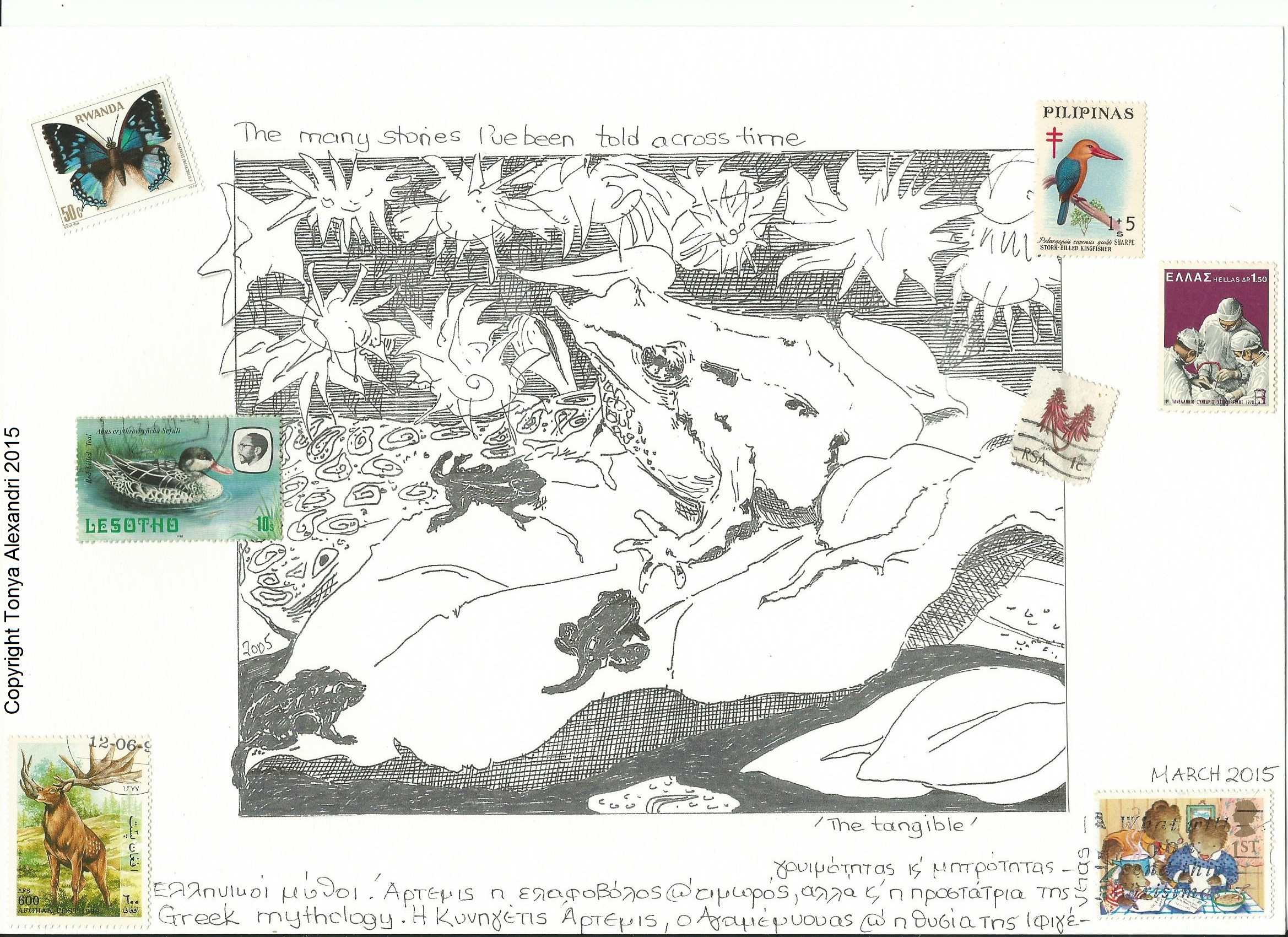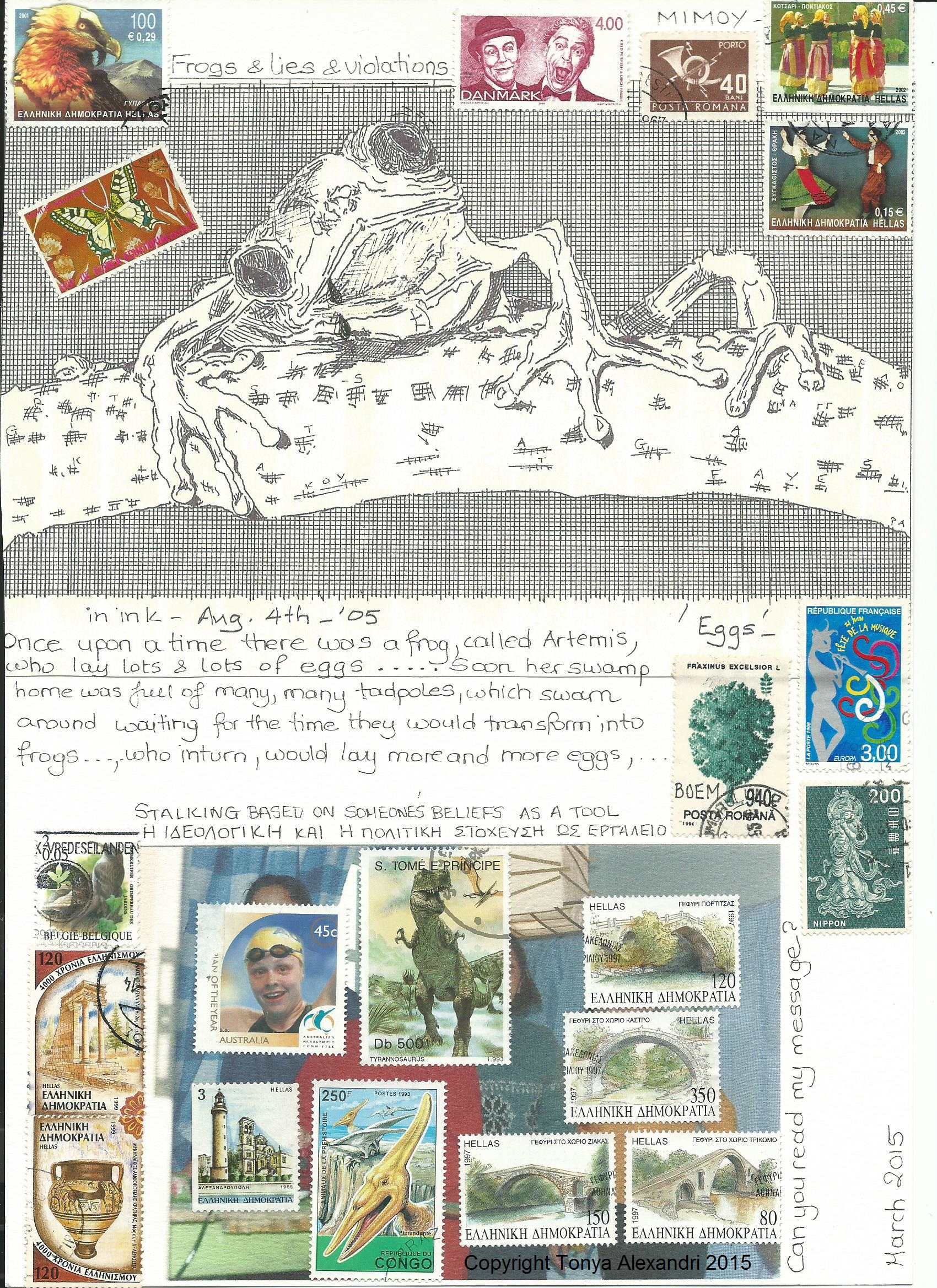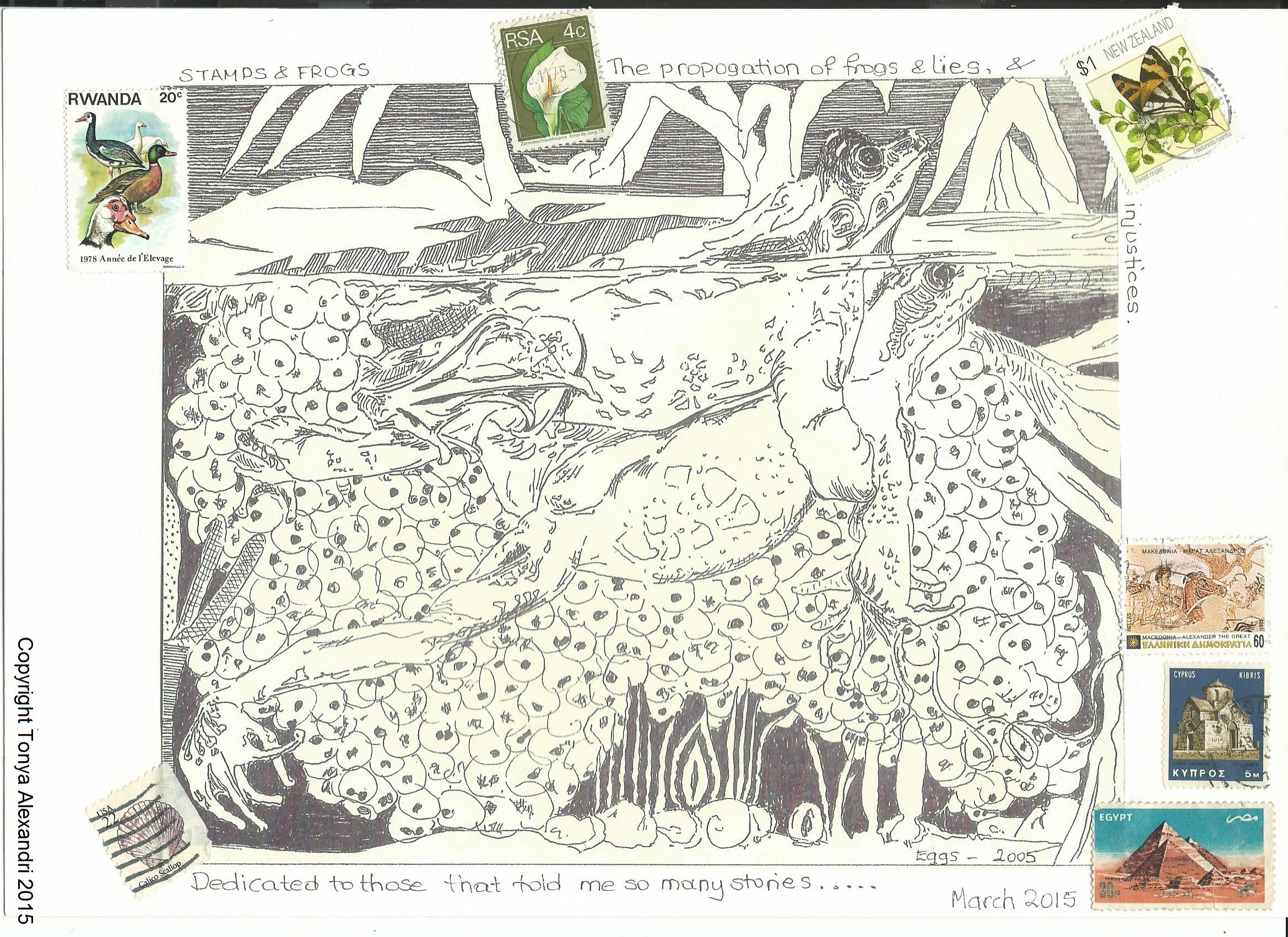A Frogs, lies and violation of rights
 D Greek myths and a collection of stamps
D Greek myths and a collection of stamps
Fortunately, art, writing and symbols provide means to express experience and narrate stories, and additionally, for survivors of trauma and injustices, these means additionally allow them to set boundaries, increase safety, and finally, restore and reclaim.
When I settled on a small island, which was to become my home for many years, I was told myths and stories about Greek ancient gods, whom I must confess, could be mighty misogynists, excessively cruel, malicious, vengeful, and murderous, at times and their philosophy was definitely not ‘live and let live’. On the contrary, they abused power more often than not and enjoyed interfering with other people’s lives and destiny. I actually remember when I first arrived I was given a book (by Asimina – a woman who initially befriended me) on Greek mythology as a gift, in English, so that I could better assimilate the myths and messages, since I was not a local and was also quite ignorant concerning Greek mythology, having received my early education in another country.
One such myth that very often comes to mind is that of Artemis, the daughter of Zeus and Leto, and the twin sister of Apollo. Artemis was the goddess of the wilderness, hunting and wild animals, fertility and childbirth and was armed with a bow and arrows. She was also often depicted with the crescent of the moon above her forehead. Her main vocation was to roam mountain forests and uncultivated land with her nymphs hunting down animals and mortals on occasion. Her sacred animal was the deer, which she both protected and hunted down. She was definitely a goddess of many contradictions, for she both protected and saw to the well-being, safety and reproduction of animals and hunted them. Similarly, she protected infants and women in child labour, but it was also said that her arrows brought them sudden death. Together with her brother she killed all of Niobe’s (a mortal) children. Like her brother Apollo she healed, while she also spread serious diseases, such as, leprosy. Artemis was above all very protective of her purity and gave grave punishment to anyone who attempted to dishonour her or her nymphs. For instance, while Actaeon was out hunting, he accidentally saw Artemis and her nymphs bathing naked in a pool. Incensed by this, she transformed him into a stag, and furthermore, set his own hounds upon him, which killed him unaware that the stag was their master. Artemis was very possessive and vengeful and she would show her wrath to anyone that disobeyed her laws and wishes. Even the great hero, Agamemnon, came upon the wrath of Artemis, when he killed a stag in her grove. Artemis punished him by becalming the sea while he was sailing towards Troy. In order to bring back the winds, she asked him to sacrifice his daughter, Iphigenia. Some versions of this myth say that he sacrificed Iphigenia; others suggest that Artemis exchanged a deer in her place, and took Iphigenia to the land of the Tauri (the Crimea) as a priestess. Another myth says that one day Hercules’s uncle asked him if he were ready for his third feat. Specifically, he asked him to bring him Artemis’ sacred deer alive. This deer ran as fast as the wind, had golden antlers and was believed to have the ability to lure people far into a strange land, from which they could not return. Artemis was similarly harsh with the nymphs that disobeyed her. She turned Callisto into a bear and then killed her with her arrow because she had allowed Zeus to seduce her and had given birth to his child. Finally, Artemis was worshiped in most Greek cities as a secondary goddess, but to the Greeks in Asia Minor (modern day Turkey) she was a prominent deity and was depicted as a fertility goddess, whereas, in mainland Greece she is mostly depicted as a huntress.
Tonya Alexandri – March, 2015


